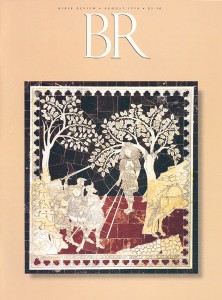Climate Was Also the Culprit in the Early Bronze Age
Sidebar to: Climate and Collapse
Recent research points to climate as the culprit in the widespread cultural upheaval during the transition from the Early Bronze Age to the Middle Bronze Age (23002000 B.C.E.). In 1993 Professor Harvey Weiss of Yale University announced that his excavations at Tell Leilan in Syria had uncovered evidence of a severe late third-millennium drought that, he says, caused the end of the Akkadian Empire in Mesopotamia.1 Weiss this joins an increasing number of scholars who recognize climatic change as a significant factor in the political and cultural changes that took place in the eastern Mediterranean around 23002000 B.C.E.
Previously, during a moist climatic phase in the eastern Mediterranean that began around 3500 B.C.E.,2 widespread urbanization developed in Early Bronze Age Greece, in Asia Minor, in Syria and in Palestine, as well as in the civilizations of Old Kingdom Egypt and Early Dynastic Mesopotamia. During the Early Bronze IIIII period (c. 30503200 B.C.E.), large walled cities, often much larger than those of later times, flourished in Palestine and Transjordan. Settlements even expanded into the Negev and Sinai, areas that are now deserts.3
Already a library member? Log in here.
Institution user? Log in with your IP address.

